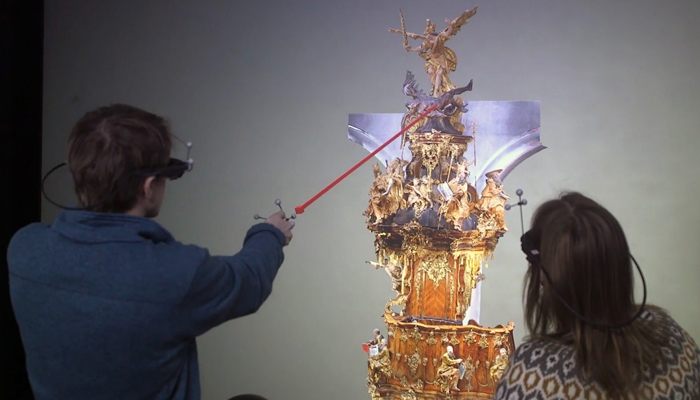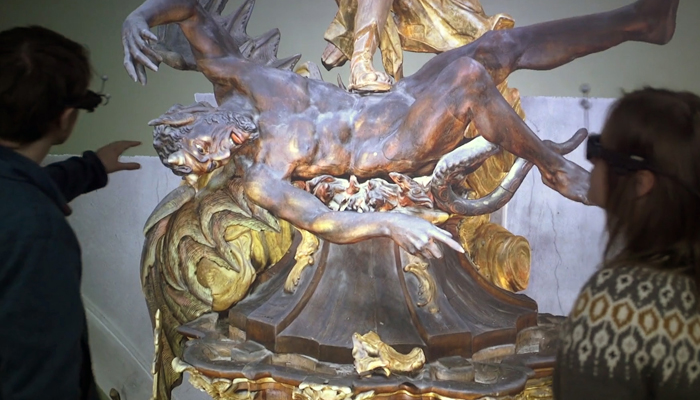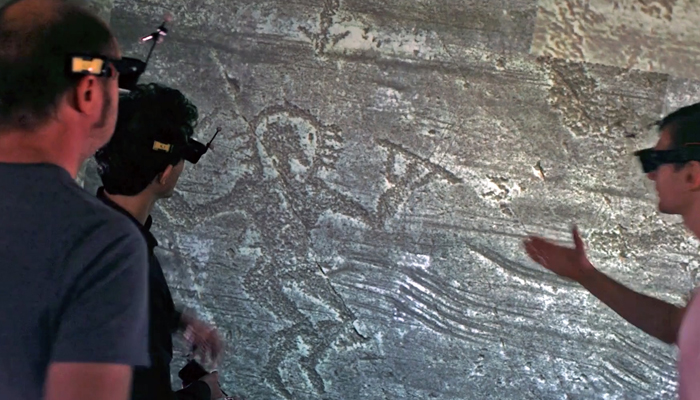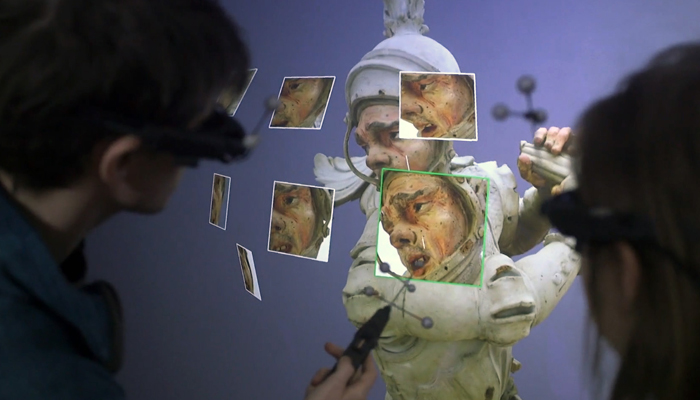Innovative VR projects
Innovative VR project in cooperation with the Bauhaus-Universität Weimar
ArcTron 3D is pleased and grateful to have been able to work with Prof. Dr. Bernd Fröhlich and his top-class team from the “Virtual Reality and Visualization Research Group” at the Bauhaus-University of Weimar on a number of cooperation and research projects for over 15 years.
Especially for our high-quality digitized objects from the fields of archaeology, preservation of architectural and artistic monuments furthermore within restoration sciences, this opens up particularly exciting, diverse and new possibilities for optimized collaborative work in virtual reality environments.


Bamberg. High-resolution documentation of the entire interior and inventory of the monastery church St. Michael carried out by ArcTron 3D GmbH (2019-2020).
The photorealistic 3D model (approx. 40 million polygons with 8K textures) of for example the famous pulpit, digitized in sub-millimeter accuracy can be displayed in real time in the interactive multi-user VR environment in Weimar. The pulpit created by Thomas von Bamberg and Adam Reuß is considered a masterpiece of the Bamberg rococo style.
Within this collaboration we have been able to provide monument specific, extremely high resolution and data intensive photorealistic 3D models in many projects. This also provided the opportunity to answer questions regarding the creation, further development and improvement of the models in joint research projects as well as the use of “BigData” 3D models from combined 3D scanning technologies (especially 3D laser scanning & photogrammetry) in VR environments.

3D models of the famous rock paintings from Valcamonica (Italy). The 3D scans displayed in Weimar in the VR-Lab achieve accuracies <0.05mm and are based on light projection scans, which were created within the EU funded 3D-PITOTI project of ArcTron 3D. In the cooperative VR, the objects can be discussed in extreme detail and evaluated e.g. with regard to different peck styles etc. More information about this research project can be found here: https://www.arctron.de/research-projects/3d-pitoti/

Light projection scans and photogrammetries were created in the course of the high-resolution digitization of masterpieces by the famous baroque and rococo artist Joseph Anton Feuchtmayer in the Monastery Museum in Salem (Lake Constance, Germany). The rear projection of the oriented photogrammetry images, developed in Weimar as part of a master’s thesis and in the research project “Provenance Analytics”, enables a direct 3D comparison of the original image and the 3D model in the Weimar VR environment. The “Feuchtmayer” 3D models are based on complex combined 3D scanning and 3D printing projects to create highly accurate replicas on behalf of the Badisches Ladesmuseum Karlsruhe.
More information about this project can be found here:
https://www.arctron.de/references/2016-en/feuchtmayer-statue_replicas/
https://www.arctron.de/references/2018-en/baroque-sculptures-replicas/
More information on the research project “Provenance Analytics” can be found here (Info in German): https://www.uni-weimar.de/de/medien/professuren/medieninformatik/big-data-analytics/research/projects/provenance-analytics/
For many years now, the VR labs in Weimar have been equipped with technical possibilities that still seem like “science fiction” with interactive 3D tabletops and multi-user platforms. They make fascinating cooperative interactive work in VR environments possible. The Weimar-based VR Group uses a novel multi-user 3D projector from the company Digital Projection, in whose development they were heavily involved.
Learn more about interactive 3D visualizations in multi-user virtual reality environments in this recently published video of the VR Lab.
- Your contact
- Martin Schaich M.A.
- +49 9408 8501 0
- info@arctron.de